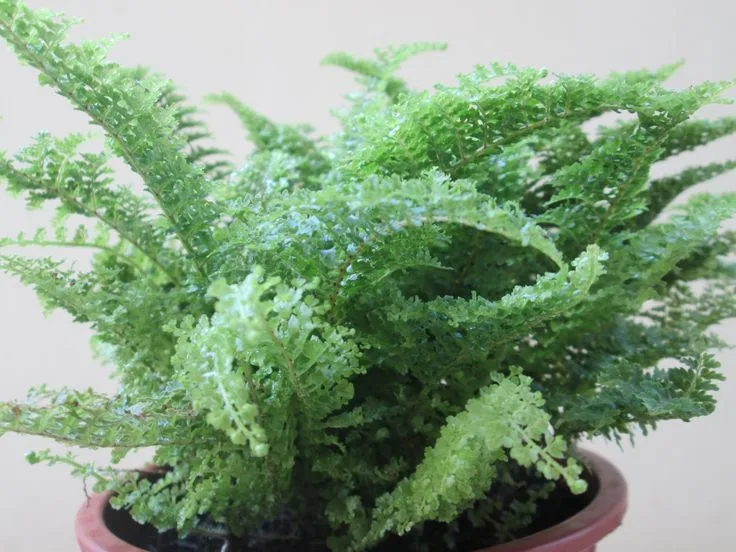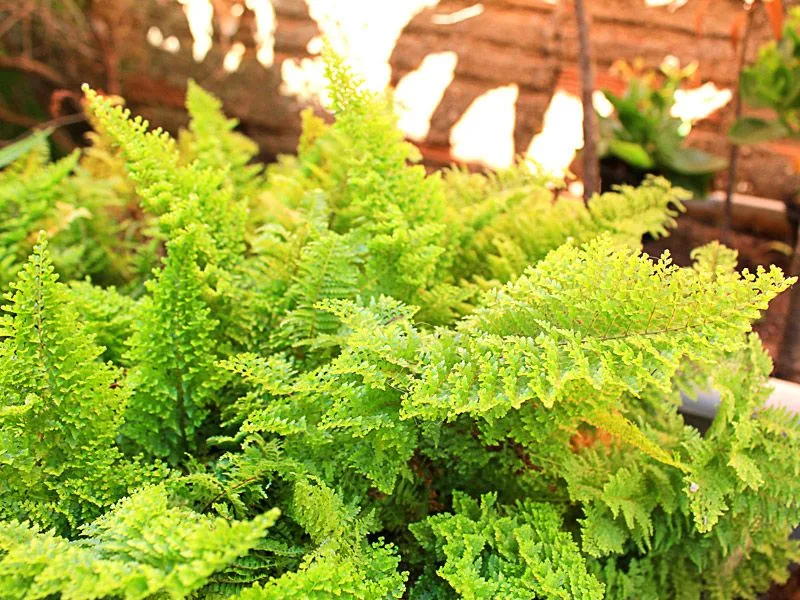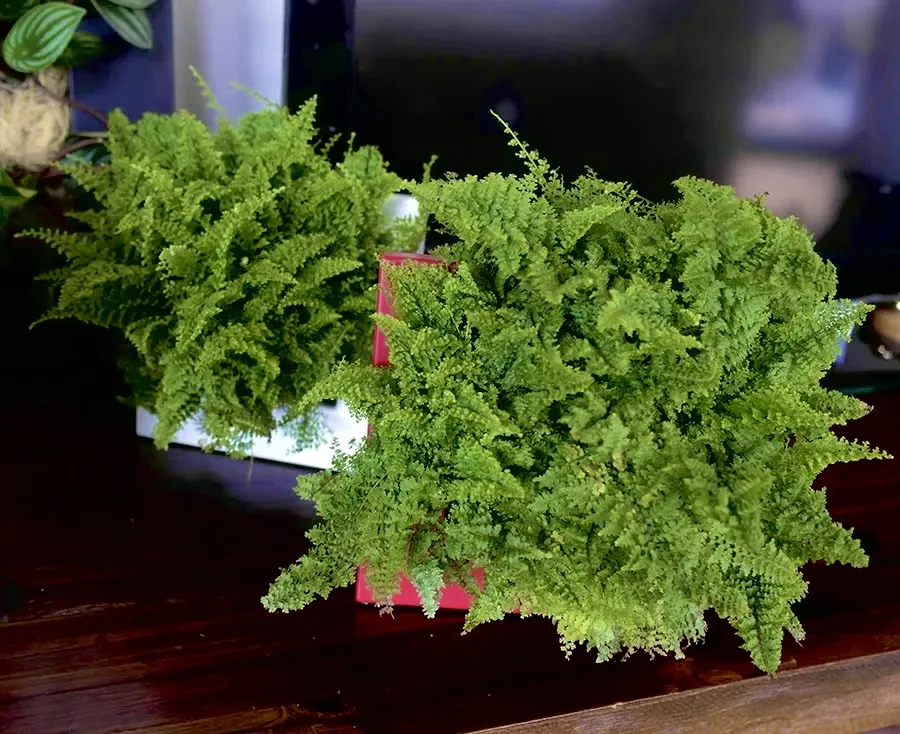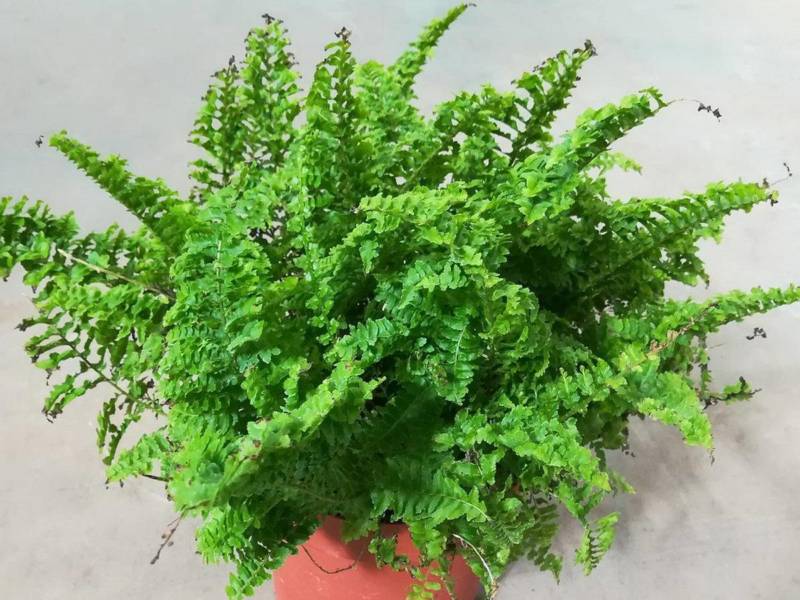Index
Introduction
Hawaiian ferns, affectionately known as mini ferns, are true botanical jewels that enchant with their delicacy and elegance. With their finely cut leaves, these little plant wonders add a tropical and graceful atmosphere to any space. Ideal for indoors, mini ferns are appreciated not only for their aesthetics, but also for their adaptability and ease of care, making them a popular choice for gardening enthusiasts.
Meaning of the Hawaiian Fern
In addition to its visual beauty, the Hawaiian fern carries symbolic meanings. Representing harmony and connection with nature, this mini fern evokes the serenity of lush tropical landscapes. Its compact size symbolizes delicacy and simplicity, providing a touch of serene nature even in limited spaces. Growing the Hawaiian fern is not only about decorating with a charming plant, but also about inviting the calming essence of nature into your home environment.
| Item | Information about the Hawaiian Fern |
|---|---|
| Common Name | Hawaiian Fern or Mini Fern |
| Botanical Name | Nephrolepis exaltata ‘Miniature’ |
| Family | Lomariopsidaceae |
| Plant Type | Herbaceous, Perennial |
| Adult Size | About 30 cm tall |
| Sun exposure | Bright indirect light |
| Soil type | Rich in organic matter, well-drained |
| soil pH | Slightly acidic to neutral |
| Flowering Season | Not known for its flowers |
| Flower color | – |
| Native Area | Tropical and subtropical regions |
| Toxicity | Not considered toxic |
How to Care for the Hawaiian Fern
When growing the delicate Hawaiian Fern, it is crucial to understand and apply specific care to ensure its health and vitality. Let’s explore the main considerations in each aspect of care, from light to fertilization.
Light:
Hawaiian ferns thrive in bright indirect light, avoiding direct exposure to the sun. Place them in places with light filtering or shaded windows. This creates a bright but soft environment, mimicking the ideal conditions for healthy growth.
Soil:
The ideal soil for the Hawaiian Fern should be rich in organic matter and well-drained. Use a light substrate mix that provides good moisture retention, which is essential to meet the specific needs of this delicate plant.
Water:
Watering the Hawaiian Fern should be regular and moderate. Keep the soil evenly moist, avoiding both dryness and waterlogging. The water should be applied directly to the soil, preventing the leaves from coming into excessive contact with the moisture.
Temperature and humidity:
Keep the temperature at around 20-25°C to ensure ideal growing conditions. In addition, the Hawaiian Fern appreciates high humidity, so consider placing trays of water near the plant or creating a more humid environment, especially in drier climates.
Fertilizing:
Fertilization should be carried out with a balanced fertilizer, applied monthly during the growing season. Avoid over-fertilizing to prevent damage to the sensitive roots.
By following these care guidelines, you will provide your Hawaiian Fern with the perfect environment to flourish and beautify your space with its lush greenery.

Propagating and planting the Hawaiian Fern
Growing and expanding your collection of Hawaiian Ferns is a rewarding experience. Let’s explore the fundamental steps for propagating and planting these lovely mini ferns.
How to Make Hawaiian Fern Cuttings
1.Choosing Healthy Specimens: Before starting the seedling process, select healthy and vigorous plants. This will ensure that the seedlings inherit desirable characteristics and are more likely to succeed.
2. Cautious Removal: Use sharp scissors to carefully remove side shoots or sprouts from the mother plant. Make sure to include a portion of the base of the cutting to promote healthy rooting.
3. Proper healing: Allow the newly removed cuttings to dry in the shade for a few hours. This healing period helps prevent infection and prepares the seedlings for the next stage.
4. Fixing in substrate: After healing, fix the seedlings in a light, well-drained substrate. Avoid burying them too deep, providing a favorable environment for the roots to develop.
How to plant the Hawaiian Fern
1. Choosing a container: When planting your Hawaiian Ferns, select a container with adequate drainage. This prevents water from accumulating in the roots, preventing problems such as rotting.
2. Soil preparation: Use a substrate mixture rich in organic matter, ensuring good aeration. Add perlite or sphagnum moss to improve drainage.
3. Proper Positioning: Plant the mini ferns so that the roots are level with the soil surface. Avoid burying the stem, as this can lead to rotting.
4. Initial watering and ongoing care: Carry out an initial watering to establish the seedlings. Keep the soil evenly moist, adjusting as necessary. Monitor growth and adjust conditions to ensure healthy development.
By following these simple steps, you will be successfully growing your Hawaiian Ferns and enjoying the miniature beauty that these charming plants offer.

Pests, Diseases and Solutions
Exploring the challenges that can arise when growing Hawaiian Fern is essential to keeping these plants healthy and lush. We’ll cover the most common pests and diseases and offer effective solutions for dealing with these setbacks.
Most common pests and diseases
- Mites: Symptoms: Fine spots on the leaves. Solution: Use neem oil or soapy water.
- Mealybugs: Symptoms: White, sticky spots. Solution: Remove by hand and apply neem oil.
- Fungus: Symptoms: Dark spots on the leaves. Solution: Reduce humidity, apply fungicide.
- Root rot: Symptoms: Dark, wet roots. Solution: Remove affected areas, replant in dry soil.
Common Problems and Their Solutions
- Dry leaves: Problem: Dry environment or lack of water. Solution: Increase humidity or adjust watering regime.
- Yellowing leaves: Problem: Excessive sun or watering. Solution: Move to a shadier spot or adjust the amount of water.
- Burnt leaf tips: Problem: Direct exposure to the sun. Solution: Move to an area with indirect light.
- Leaf discoloration: Problem: Stress or lack of nutrients. Solution: Fertilize moderately and monitor conditions.
By promptly identifying common pests and problems, you can apply the appropriate solutions, ensuring the vibrant health of your Hawaiian Ferns. Keep an eye out for the signs and maintain an environment conducive to the flourishing of these lovely plants.

Curiosities and Myths
Discover fascinating facts and dispel common misconceptions as we delve into the enchanting universe of Hawaiian Ferns. Get ready to be surprised by curious information and debunk myths about these little plant wonders.
Curiosities:
1. Exceptional Adaptation: Despite their compact size, Hawaiian Ferns have a remarkable ability to adapt to different environments, making them perfect for indoor spaces and interior decoration.
2. Tropical Resilience: Originating in tropical regions, these plants are masters at surviving in varied conditions, bringing a touch of exoticism and vitality to homes around the world.
3. Versatile Landscaping: The versatility of Hawaiian Ferns makes them popular choices in landscaping, from small decorative pots to terrariums and vertical gardens.
Myths Debunked:
1. Ferns are Poisonous: Myth: Many people believe that all ferns are poisonous. Reality: Hawaiian Ferns are non-toxic and safe for domestic environments.
2. They need a lot of water: Myth: People think that these plants need a lot of water. Reality: Although they appreciate humidity, over-watering can damage the roots. Moderation is the key.
3. Grow Fast and Uncontrollably: Myth: Assumption that they grow uncontrollably. Reality: Growth is moderate, and they can be easily managed with proper care.
By exploring these curiosities and debunking myths, you gain a deeper understanding of the enchanting Hawaiian Ferns. Turn your knowledge into effective practices to fully enjoy the beauty and uniqueness of these little plant wonders.
Curiosities and Myths
Discover fascinating secrets and debunk misconceptions as we delve into the enchanting world of Hawaiian Ferns. Be prepared to be surprised by intriguing information and unravel myths surrounding these little plant wonders.
Curiosities: Hidden Wonders of Hawaiian Ferns
1. Surprising Adaptation: Hawaiian Ferns, despite their compact stature, stand out for their remarkable ability to adapt to diverse environmental conditions. This adaptability makes them ideal choices for indoor environments, providing a tropical atmosphere in any home.
2. Tropical Resilience: Originally from tropical regions, these plants display remarkable resilience, bringing a touch of exoticism and vitality to spaces around the world.
3. Versatility in Landscaping: The versatility of Hawaiian Ferns makes them popular in landscaping projects, from small decorative pots to the creation of terrariums and vertical gardens.
By exploring these curiosities and debunking myths, you’ll develop a deeper understanding of the enchanting Hawaiian Ferns. Turn this knowledge into effective practices to fully appreciate the beauty and uniqueness of these little plant wonders.

Conclusion
Throughout this journey through Hawaiian Ferns, we have immersed ourselves in a world of delicate beauty and tropical resilience. We discovered how these little plant wonders, despite their modest stature, dazzle with their capacity for adaptation and versatility, adding a dash of exoticism to diverse environments.
To recap, we learn about the fascinating curiosities surrounding these plants, from their remarkable adaptation to their versatile role in landscaping. We debunk common myths, clearing up misconceptions about toxicity and excessive care. Understanding the true nature of Hawaiian Ferns enables us to cultivate them successfully, appreciating not only their charming aesthetics, but also the serenity they bring to the spaces they inhabit. By incorporating these plants into our lives, we are celebrating the harmony between nature and our home environment, creating a green haven full of natural beauty.
Frequently Asked Questions
What is the meaning of the Hawaiian Fern?
The Hawaiian fern, also known as the mini fern, is a symbol of delicacy, adaptability and harmony with nature. Native to tropical regions, its presence indoors not only adds an exotic touch, but also evokes a sense of serenity, connecting spaces to the freshness of tropical landscapes.
Can you wet the leaves of the Hawaiian fern?
Although the Hawaiian fern appreciates moisture, it is advisable to avoid directly wetting its leaves, as this can lead to the development of fungal diseases. Excess water on the leaves can harm the plant. Instead, it is recommended to water the soil directly, ensuring adequate hydration without exposing the leaves to excessive moisture.
How to care for a Hawaiian fern?
Caring for the Hawaiian fern involves ensuring an environment with bright indirect light, well-drained soil and moderate watering. Avoid direct sunlight and maintain an adequate humidity level, especially in drier climates. Fertilizing during the growing season and monitoring the plant’s general health are essential practices for keeping this mini fern lush and healthy indoors.







